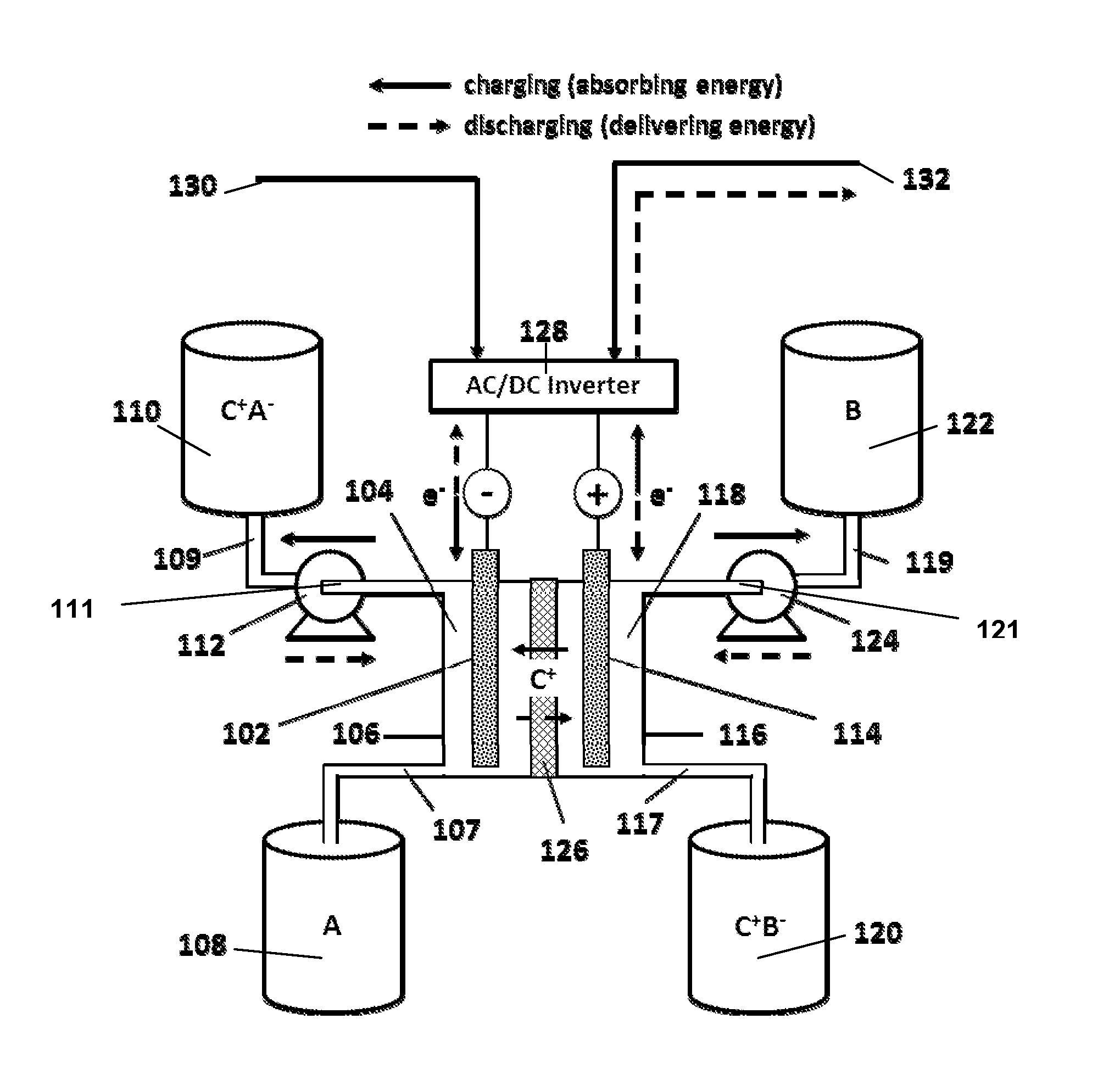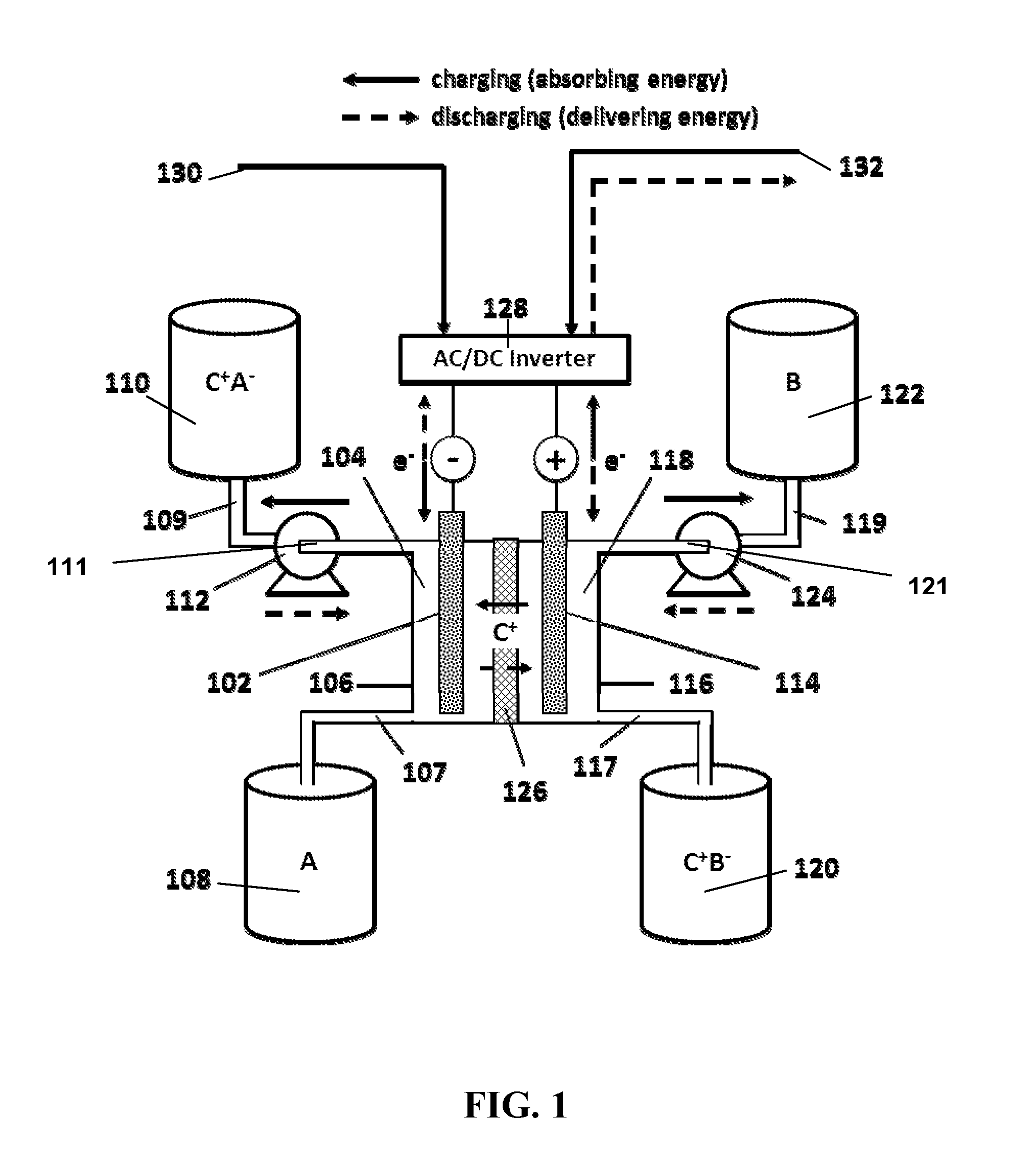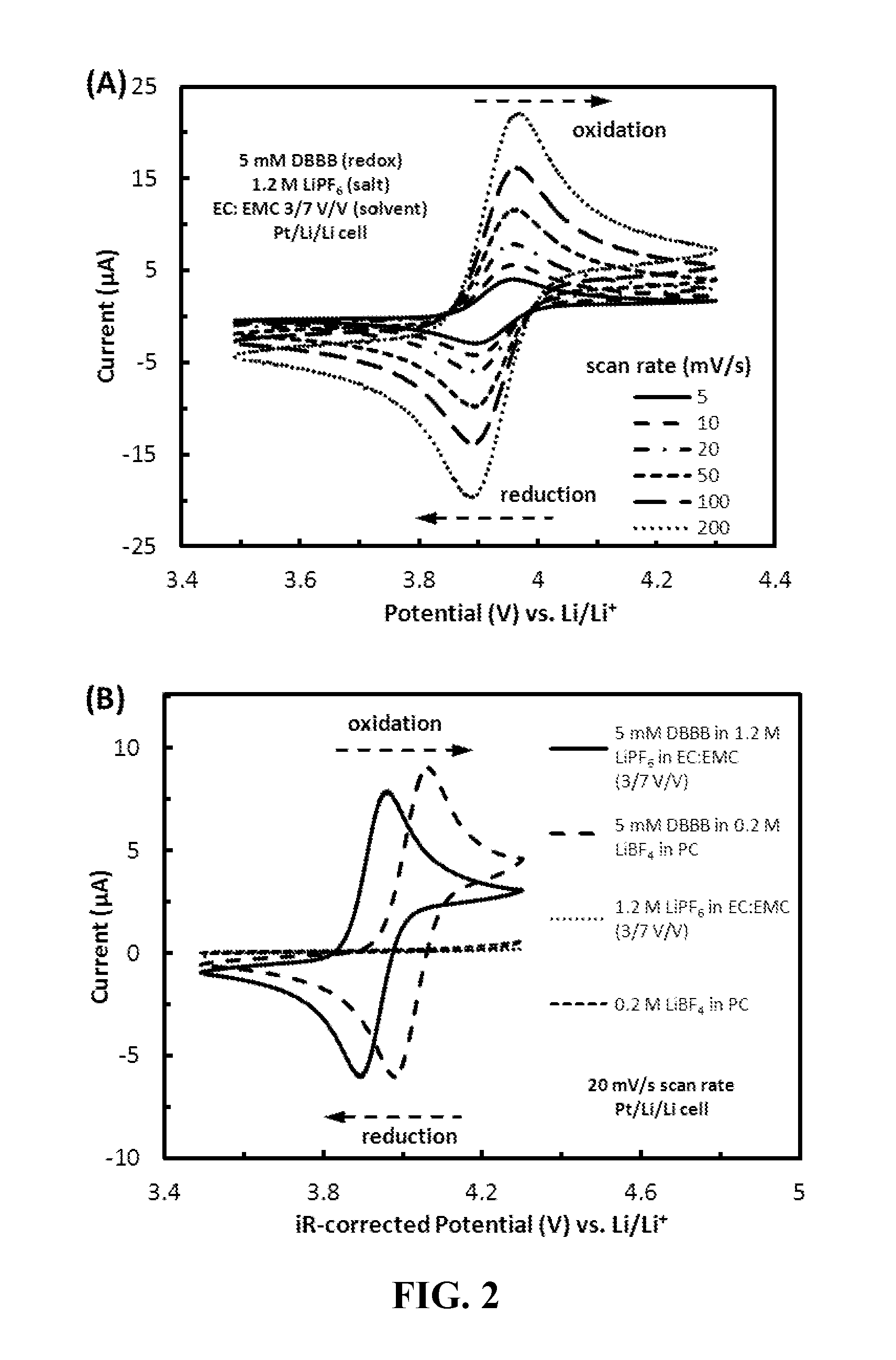Organic non-aqueous cation-based redox flow batteries
a redox flow battery, organic technology, applied in the direction of indirect fuel cells, cell components, electrochemical generators, etc., can solve the problems of limited by the electrochemical properties of water, cannot be directly connected to the grid, none of the problems have experienced widespread commercialization, etc., to improve the redox potential of compounds and improve solubility
- Summary
- Abstract
- Description
- Claims
- Application Information
AI Technical Summary
Benefits of technology
Problems solved by technology
Method used
Image
Examples
example 1
[0073]2,5-Di-tert-butyl-1,4-bis(2-methoxyethoxy)benzene (“DBBB”) is a redox material developed at Argonne National Laboratory for overcharge protection in Li-ion batteries [19]. DBBB has been shown to be active, at about 4.0 V vs. Li / Li+, for 200 cycles of 100% overcharge in a Li-ion cell, which is approximately equivalent to 10,000 redox cycles. Moreover, the material is not air sensitive and exhibits no side reactions at any potential lower than the redox potential. FIG. 2a shows the cyclic voltammograms of 0.005 M DBBB dissolved in an electrolyte consisting of 1.2 M LiPF6 in ethylene carbonate / ethyl methyl carbonate at a volume ratio of about 3 to 7 (“Electrolyte A”) at scan rates ranging from 5 to 200 mV / s. DBBB displays a well-defined reversible redox couple with a redox potential of about 3.927 V vs. Li / Li+, based on the average of the anodic and cathodic redox potentials [(Epa+Epc) / 2]. The diffusion coefficient of DBBB was determined to be about 1.30×10−6 cm2 / s in the battery...
example 2
Baseline (Comparative) Electrolyte Compositions
[0082]Three different baseline electrolytes compositions were used in the exemplary batteries: Electrolyte A: 1.2 M lithium hexafluorophosphate in a mixture of ethylene carbonate and ethyl methyl carbonate at a volume ratio of about 3 to 7 (Tomiyama High Purity Chemical Industries Ltd.); Electrolyte B: 0.2 M lithium tetrafluoroborate (98% pure, anhydrous, Acros Organics) in propylene carbonate (99.7% pure, anhydrous, Aldrich); and Electrolyte C, 1.2 M lithium hexafluorophosphate in a mixture of ethylene carbonate and ethyl methyl carbonate at a weight ratio of about 3 to 7 (Tomiyama High Purity Chemical Industries Ltd.). All chemicals were used as received and stored in an Argon-filled glove box. All solutions were prepared in the glove box.
Apparatus, Instrumentation and Methodology.
[0083]Cyclic voltammetry (CV) were performed in a custom-made airtight three-electrode electrochemical cell with a 2-mm diameter platinum disk working elect...
example 3
Other Negative Redox Materials
[0086]In addition to the quinoxaline materials, dipyridyl ketones also are useful as redox reactant components of the negative electrolyte. For example, the redox activity of di-(2-pyridyl) ketone (1):
was evaluated in a Pt / Li / Li cell in an electrolyte containing 0.2 M LiPF6 in PC under the conditions described for evaluation of the quinoxaline materials. FIG. 8 shows a cyclic voltammogram of 13 mM di-(2-pyridyl) ketone in this electrolyte at a scan rate of about 20 mV / s in a Pt / Li / Li cell at room temperature. FIG. 9 shows cyclic voltammograms of di-(2-pyridyl) ketone in different electrolyte compositions at a scan rate of about 20 mV / s in a Pt / Li / Li cell at room temperature. In each case the di-(2-pyridyl) ketone concentration was in the range of 10 to 20 mM. The electrolytes evaluated included 0.2 M LiPF6 in PC, Electrolyte A, Electrolyte B, and 0.2 M lithium bis(trifluoromethanesulfonyl)imide (LiTFSI) in PC. The choice of electrolyte composition clear...
PUM
 Login to View More
Login to View More Abstract
Description
Claims
Application Information
 Login to View More
Login to View More - R&D
- Intellectual Property
- Life Sciences
- Materials
- Tech Scout
- Unparalleled Data Quality
- Higher Quality Content
- 60% Fewer Hallucinations
Browse by: Latest US Patents, China's latest patents, Technical Efficacy Thesaurus, Application Domain, Technology Topic, Popular Technical Reports.
© 2025 PatSnap. All rights reserved.Legal|Privacy policy|Modern Slavery Act Transparency Statement|Sitemap|About US| Contact US: help@patsnap.com



